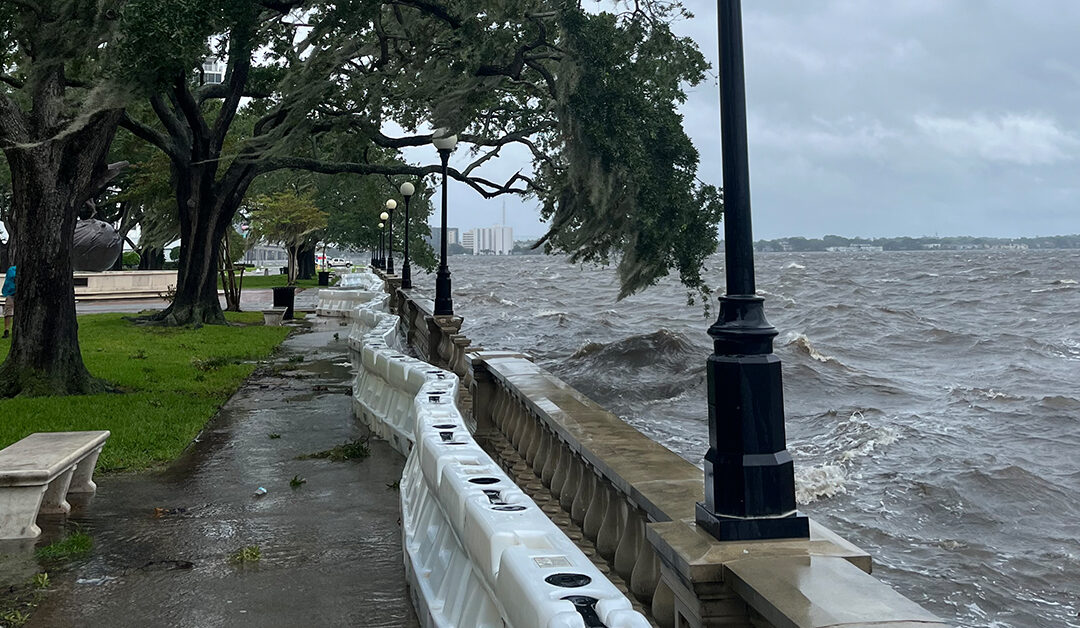With Hurricane Helene threatening to affect the St. Johns River watershed, we want to share some hurricane season reminders as we work to keep our families and our river safe.
The NOAA predicted above-normal hurricane activity in the Atlantic basin this year during hurricane season (June 1 to November 30), due to numerous factors “including near-record warm ocean temperatures in the Atlantic Ocean, development of La Nina conditions in the Pacific, reduced Atlantic trade winds and less wind shear, all of which tend to favor tropical storm formation.” The predictions remained similar in their mid-season update.
You can view NOAA’s Seven-Day Graphical Tropical Weather Outlook here.
Storm Preparedness for Your Family
As we continue to traverse prime hurricane season, it is critical that we all take steps to protect our families, our homes, and our businesses. We encourage you to search for the emergency management department or hurricane preparedness website page for your county (Duval, Clay, Putnam, St. Johns, Volusia, Marion, Orange, Indian River).
Tributary and River Health in Your Neighborhood
It is also important that we protect our river and its tributaries from unnecessary harm.
Here are simple river-friendly tips to add to your hurricane preparedness check list:
- Secure any chemicals, fertilizers or pesticides in your garage or shed in an elevated position that is not subject to flooding, so they cannot leak into our storm drains and waterways.
- Make sure storm drains around your home are clear of debris.
- Avoid walking through moving water and do not let kids play in flood waters after the storm. Flood waters are often highly contaminated with raw sewage, toxic chemicals, and other hazards.
These simple measures will help prevent future harmful algae outbreaks by reducing nutrient pollution in our waterways. If you don’t already know, check out your favorite Maps app to find the closest waterway to your house. You may have a small creek that stormwater around your house leads to, which flows into a larger waterway and eventually the St. Johns River! You can help bolster the health of the St. Johns with simple river-friendly actions around your own home.
The Bigger Picture
Hurricanes can be devastating for our communities, as well as our river. Hurricane Irma in 2017 was a major factor in the disappearance of SAV in the St. Johns, leading us to launch the Save Our River’s Grasses Expedition in 2023.
Unfortunately, climate change is contributing to the increase in water temperatures and atmospheric moisture that is leading to more intense storms, stormwater runoff, and algae blooms that can be highly toxic threatening our health. As a result, water quality and the health of the river are degraded, preventing the regrowth of submerged grasses in our river and reducing critical habitat for fish and wildlife. Warmer waters also hold less dissolved oxygen, which can lead to fish kills.
We can all do our part by conserving energy and ensuring that our city and state leaders take aggressive steps to reduce Greenhouse Gas (GHG) emissions and adapt to the impacts of a warming planet. This includes investing in green infrastructure, implementing resilience policies, replacing coal electric generation with renewable energy, and protecting the forests, wetlands and saltmarshes that sequester carbon and protect our communities from flooding and storm surge.
Check out more of St. Johns RIVERKEEPER’s advocacy work.
Stay safe.
